Can the experience of a luxury brand be distinctly local? G8A Architecture & Urban Design expresses the Hanoia brand in a trio spaces characteristic of Vietnam.

Hanoia House in Hanoi. Photo by Le Hai Anh
June 10th, 2019
G8A Architecture & Urban Planning has been collaborating with Vietnamese luxury brand Hanoia since 2014, completing three retail interiors in Hanoi and Ho Chi Minh City. As standalone projects, each store exhibits a refined approach to retail display and materiality. But when viewed as a series of projects, these stores tell a fascinating story – not only about the brand, but about Vietnamese cultural and urban typologies.

Hanoia House in Hanoi. Photo by Le Hai Anh
Hanoia specialises in high-quality lacquer products that incorporate traditional Vietnamese techniques. “The brand works with one of the last few lacquer masters in Vietnam,” says Manuel Der Hagopian, a Partner at G8A. “When you talk about lacquer in Vietnam, you see a lot of cheap products that you can buy almost anywhere,” he says. “For Hanoia, it was very important to put the product on another level.”
Contrary to what may have been expected, G8A proposed to do this with the use of inherently local materials and a contextualised experience of space – a way of encapsulating the ‘truthfulness’ behind the Hanoia brand’s approach to a traditional material and technique.
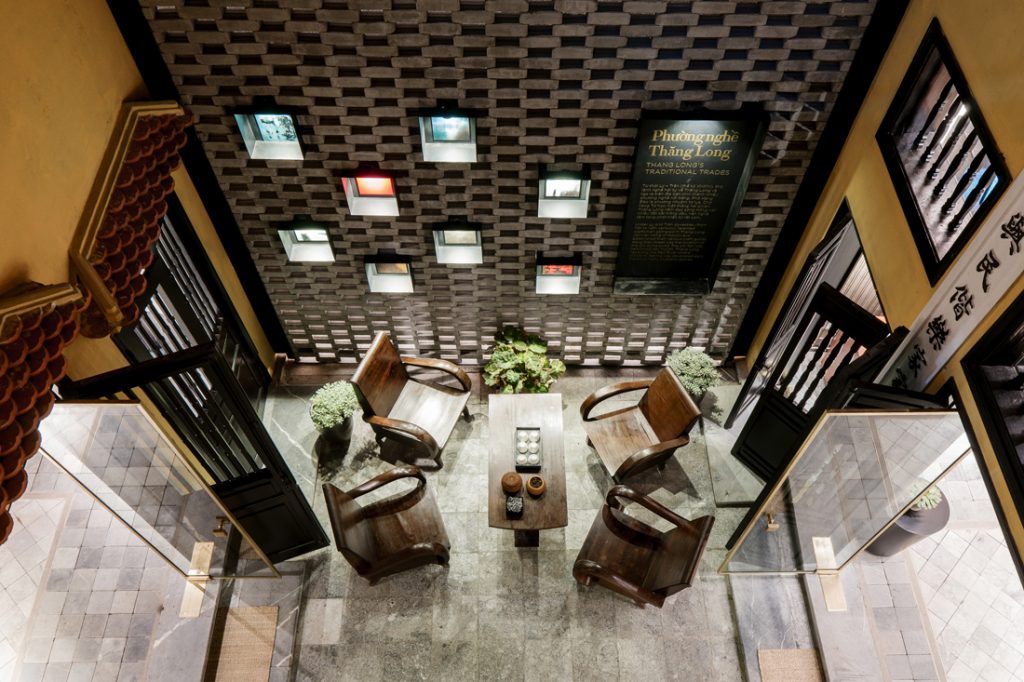
Hanoia House in Hanoi. Photo by Le Hai Anh
Three distinctly different sites became available for the Hanoia stores: a long Chinese shophouse in Hanoi’s old quarter, a unit within the colonial-era Grand Hotel Metropole in the same city, and a mutated tube house in Ho Chi Minh City. These sites presented G8A with the unique opportunity to implement the Hanoia brand in a series of architectural typologies that are typical of Vietnam.
In each store, the concept of an ‘architectural promenade’ was developed. That is, an experience of space defined by a sequence of views, and states of openness and enclosure. The nature of the experience was determined by the typology.
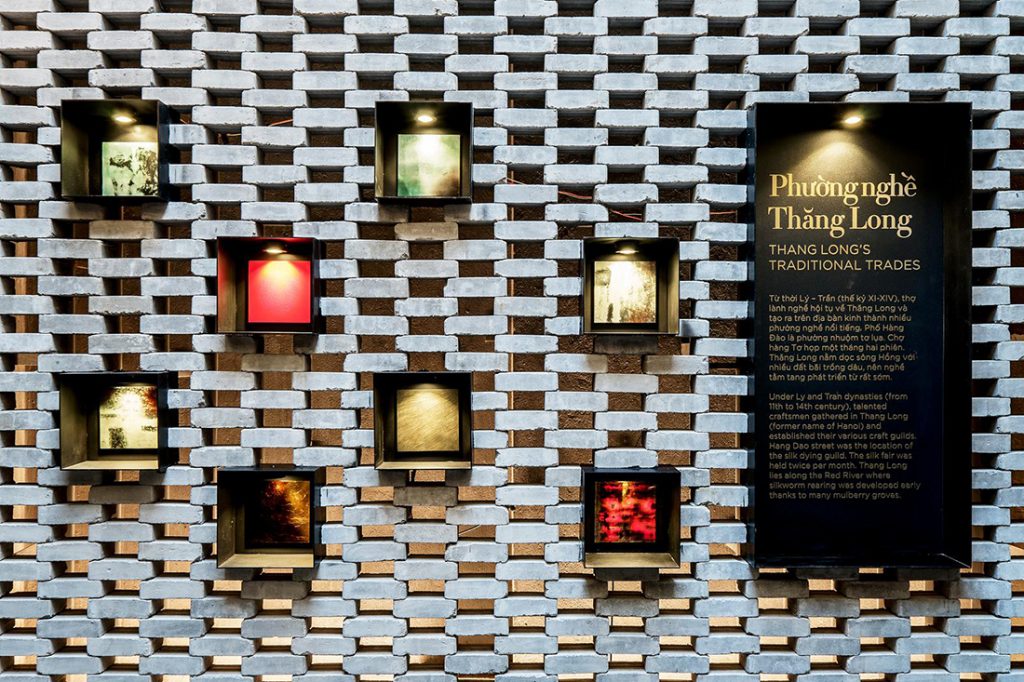
Hanoia House in Hanoi. Photo by Le Hai Anh
The first store is a horizontal voyage – a long passage through the rooms and courtyards of the old shophouse. A sensation of immersion in the long, narrow unit was created with each room dedicated to a different type of product and each open-to-sky courtyard offering a different program (such as tea drinking).
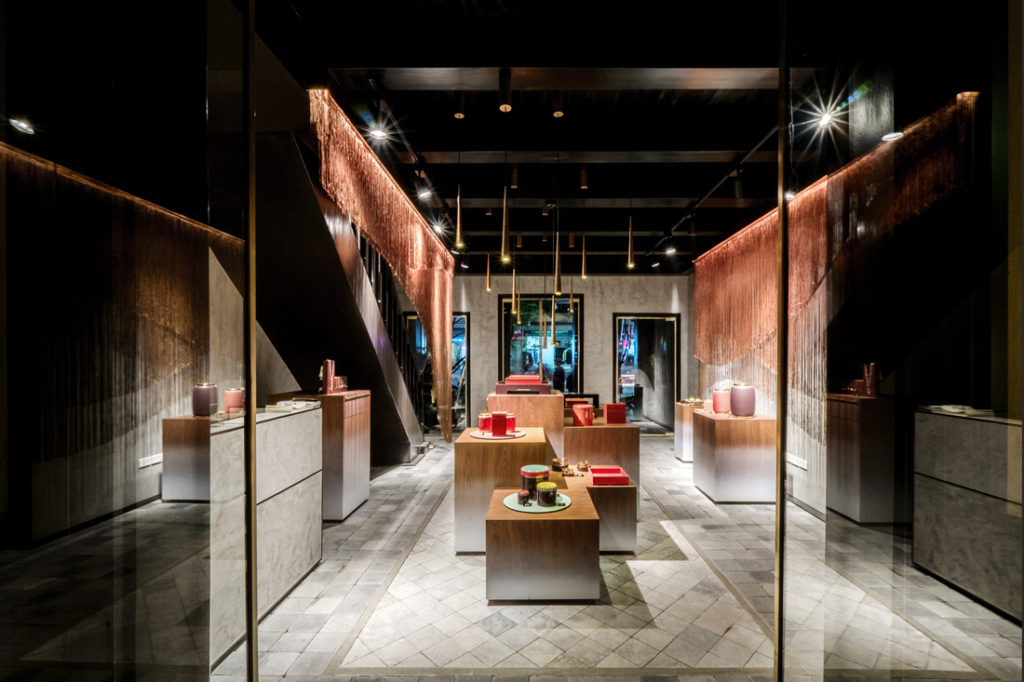
Hanoia House in Hanoi. Photo by Le Hai Anh
Basic and raw materials echo the context, as does the use of silk thread – a reference not only to Hanoia’s silk clothing line but also Hanoi’s status as the historical epicentre of the regional silk trade. The textured raw materials create a deliberate contrast with the sheen and colour of Hanoia’s lacquerware.
Hanoia Metropole is nestled into the east wing of the Sofitel Legend Metropole Hanoi in the French quarter of the city. “The Metropole store is a more compressed experience – the opposite of the shophouse,” says Der Hagopian.

Hanoia Metropole in Hanoi. Photo by Le Hai Anh
The store is in a space no bigger than a hotel room, and G8A therefore decided to explore a ‘vitrine typology’ – a single-layered space that can be experienced visually from the footpath. Der Hagopian hints at the connection between such a singular space and the colonial viewpoint.
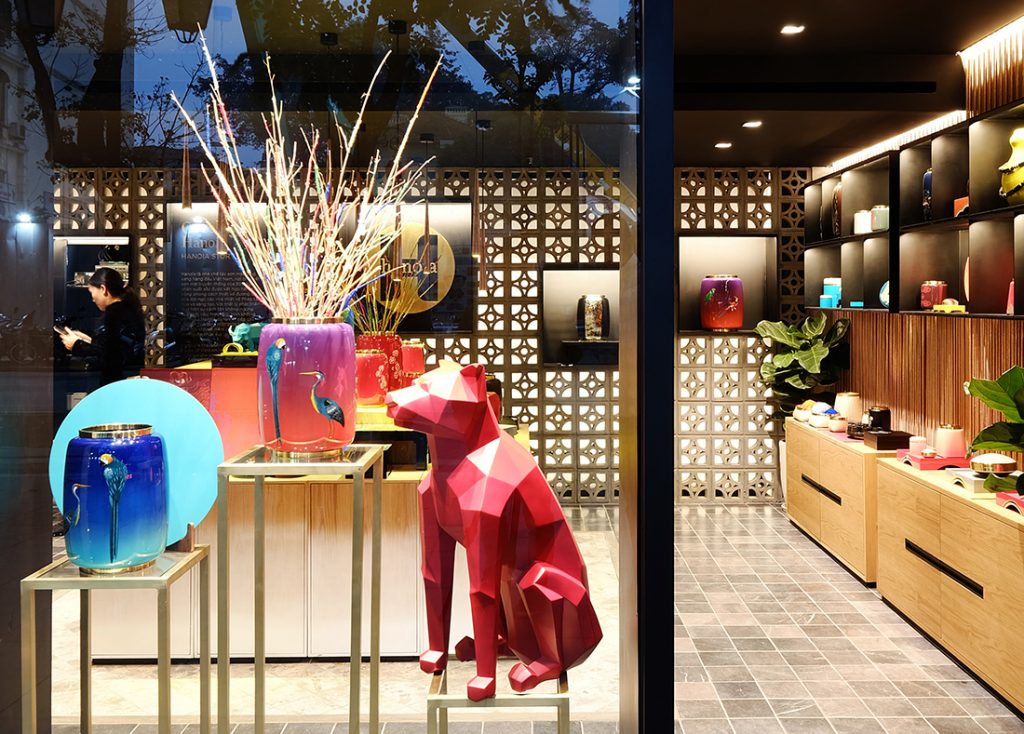
Hanoia Metropole in Hanoi. Photo by Le Hai Anh
Moucharaby brick was employed here as a backdrop to the powerful depth of materiality in the lacquerware products on display.
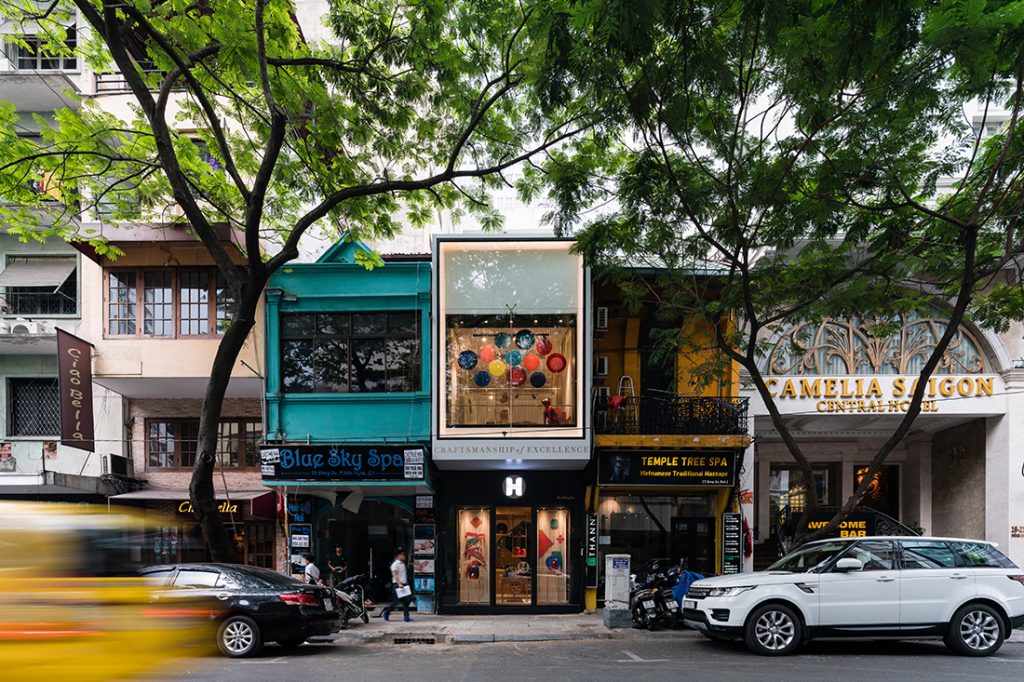
Hanoia Ho Chi Minh City. Photo by Quang Dam
In Ho Chi Minh City, Hanoia has a space in the commercial centre of District 1. It is an area where rising land prices have pushed the growth of traditional courtyard units in the vertical dimension. Here, Hanoia’s multi-level space allowed G8A to explore a vertical extension of the ‘architectural promenade’.

Hanoia Ho Chi Minh City. Photo by Quang Dam
A boutique product ‘lift’ hints at the verticality to come in the customer’s journey. A hidden room at a landing displays the making of Hanoia products in a video presentation.
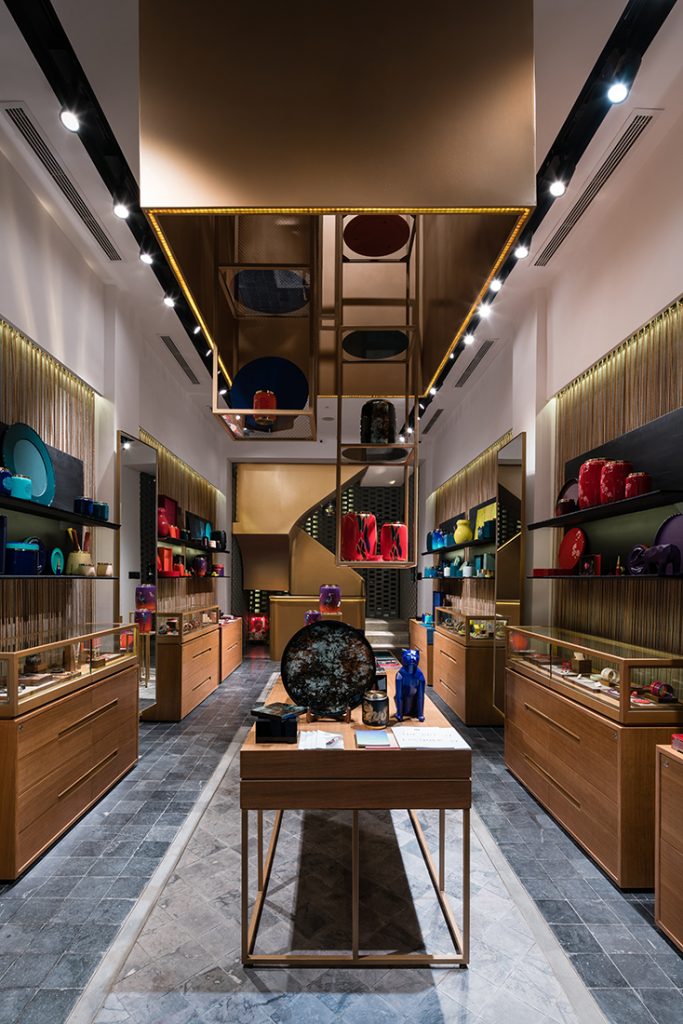
Hanoia Ho Chi Minh City. Photo by Quang Dam
The journey ends in a lounge area that overlooks the street.
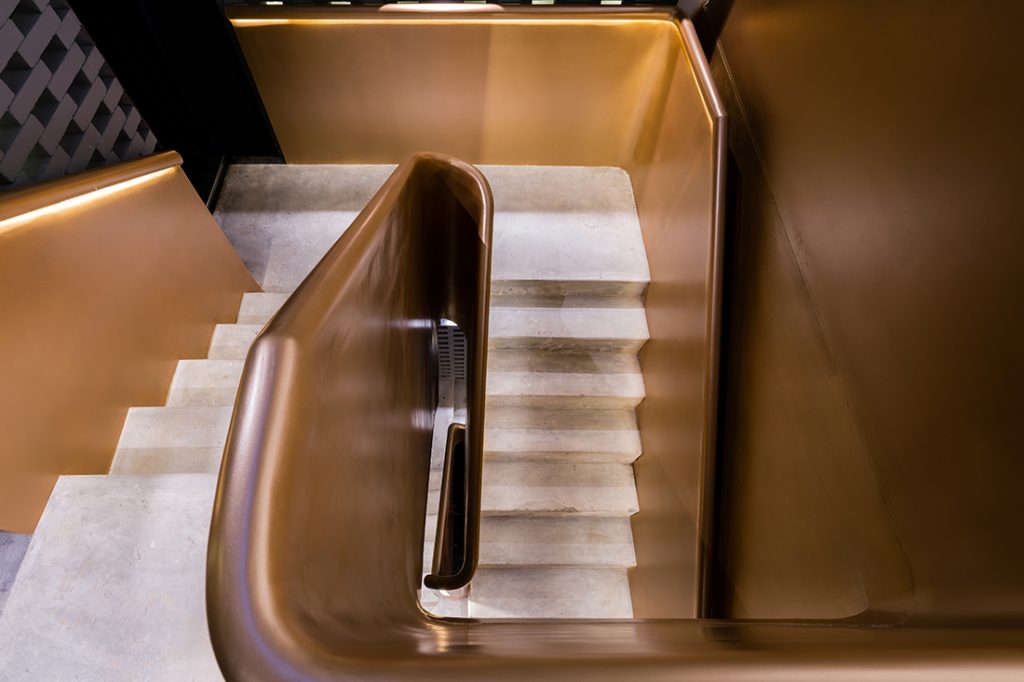
Hanoia Ho Chi Minh City. Photo by Quang Dam
A traditional horizontal experience of space in a shophouse; a single-frame view in a colonial-era hotel; and a vertical journey through an expanded tube house – three typologies architecture in Vietnam are the basis of three experiences of the Hanoia brand.
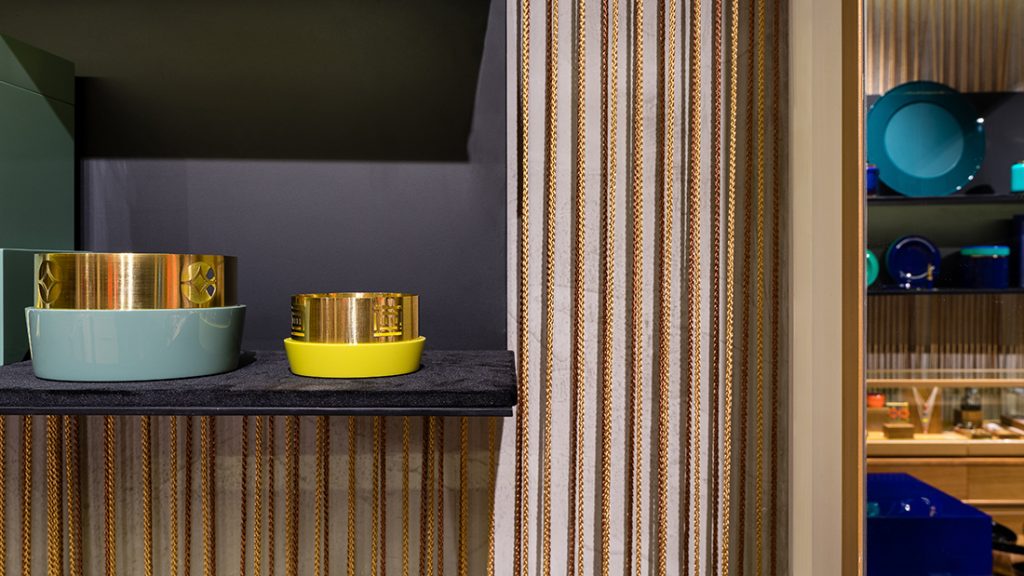
Hanoia Ho Chi Minh City. Photo by Quang Dam
INDESIGN is on instagram
Follow @indesignlive
A searchable and comprehensive guide for specifying leading products and their suppliers
Keep up to date with the latest and greatest from our industry BFF's!
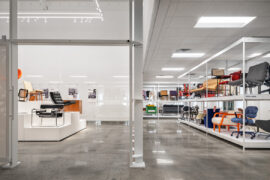
The undeniable thread connecting Herman Miller and Knoll’s design legacies across the decades now finds its profound physical embodiment at MillerKnoll’s new Design Yard Archives.
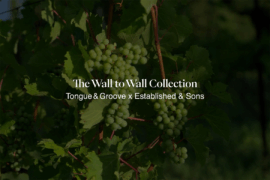
London-based design duo Raw Edges have joined forces with Established & Sons and Tongue & Groove to introduce Wall to Wall – a hand-stained, “living collection” that transforms parquet flooring into a canvas of colour, pattern, and possibility.

Seven years in the making, the new Surry Hills Village is here with doors open and crowds gathering.
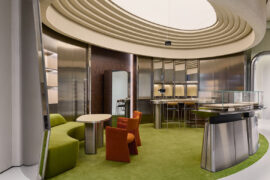
Inside Bangkok’s Siam Paragon Mall, L’Atelier by Dinding Design Office celebrates the artistry of independent watchmaking through a space defined by light, craft and meticulous detail.
The internet never sleeps! Here's the stuff you might have missed
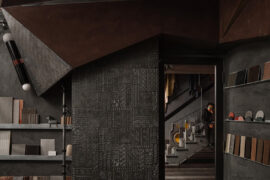
Bangalore studio Multitude of Sins elevates true leftovers — not surplus — into a richly layered workspace where waste materials become narrative, structure and sculptural expression.
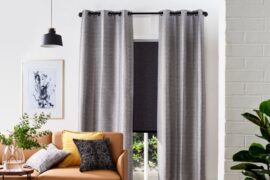
A lighter, roomier feel in your space can start at your window.
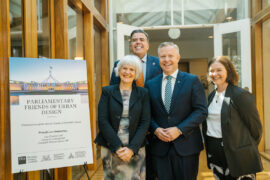
The Parliamentary Friends reconvened at Parliament House, uniting political and professional leaders to champion architecture and design.
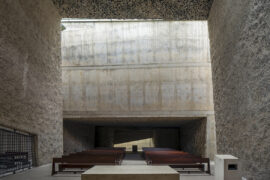
The World Architecture Festival has named The Holy Redeemer Church and Community Centre of Las Chumberas in La Laguna, Spain as World Building of the Year 2025, alongside major winners in interiors, future projects and landscape.